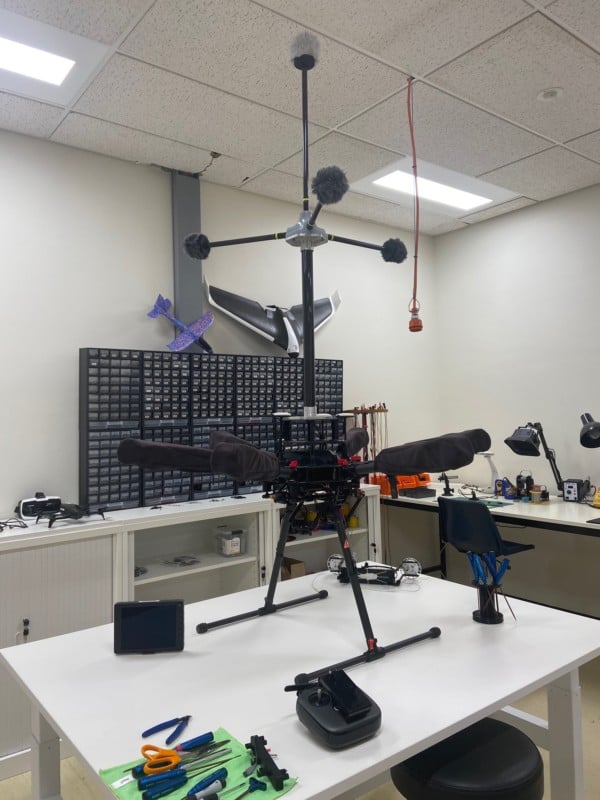Researchers Build Long-Range Drone Detection by Mapping Bug’s Brain
![]()
Researchers from Australia have reverse engineered the visual system of hoverflies, an insect that feeds on nectar, to detect the acoustic signature of drones from as far as four kilometers away (about 2.5 miles) even in noisy environments.
Anthony Finn, a professor of autonomous systems at the University of South Australia, and Dr. Russel Brinkworth, an associate professor in Autonomous Systems at Finders University, say that trials using their bio-inspired signal processing techniques show considerably improved detection rate of drones when compared to existing methods.
Based on the Hoverfly’s Brain
Researchers typically look for specific patterns (narrowband) or general signals (broadband) to pick up drone acoustics at short to medium distances, but at longer distances, the signal is weaker and both techniques struggle to achieve reliable results.
The team realized that similar conditions exist in the natural world, where dim regions are very noisy but insects such as the hoverfly have a very powerful visual system that can capture visual signals.
“We worked under the assumption that the same processes which allow small visual targets to be seen amongst visual clutter could be redeployed to extract low volume acoustic signatures from drones buried in noise,” Dr. Brinkworth says.
The team says that the hoverfly’s superior visual and tracking skills have been successfully modeled to detect drones in busy, complex, and obscure landscapes for both civilian and military purposes. The researchers say that by converting acoustic signals into two-dimensional “images” called spectrograms, they were able to use the neural pathway of the hoverfly brain to improve and suppress unrelated signals and noise, thereby increasing the detection range for the sounds they wanted to detect.
“It was the hoverfly that Russel used to essentially develop the neurological model for,” Finn says. “Their capacity to track their prey with their early vision system is a very acutely honed system for identifying motion. And that allows us to considerably enhance the detectability of signatures. We can detect these out to ranges of three to four kilometers and those are very small drones.”
Finn explains that bio-vision processing has already been used to show a large increase in the detection range of drones in both visual and infrared data, but their new research adds audio detection to the mix.

“We have now shown we can pick up clear and crisp acoustic signatures of drones, including very small and quiet ones, using an algorithm based on the hoverfly’s visual system.”
Compared with traditional techniques, the researchers say bio-inspired processing improves detection ranges by between 30% and 49%, depending on the type of drone and the conditions.
Designed to Protect Closed Airspaces
Dr. Brinkworth, says the ability to both see and hear small drones at greater distances could be hugely beneficial for aviation regulators, safety authorities, and the wider public who might seek to monitor autonomous aircraft in sensitive airspace.
“We can build a system that can spot targets in complicated environments, for example, drones that are flying very far away in a place they are not supposed to be,” Dr. Brinkworth says. “We can look at how to process sounds, and so we can extract more information from different sounds and look at speech patterns and the sounds of objects that we are looking for even in noisy environments much better than what regular systems can.

“We’ve witnessed drones entering airspace where commercial airlines are landing and taking off in recent years, so developing the capacity to actually monitor small drones when they’re active near our airports or in our skies could be extremely beneficial towards improving safety,” he adds.
The researchers say that the findings could help combat the growing global threat posed by IED-carrying drones, including in the current war in Ukraine.
The full full research paper has been published in The Journal of Acoustical Society of America.
Image credits: Header photo includes photo of the “hoverfly drone” courtesy of the University of South Australia. Photo of the hoverfly via creative commons.